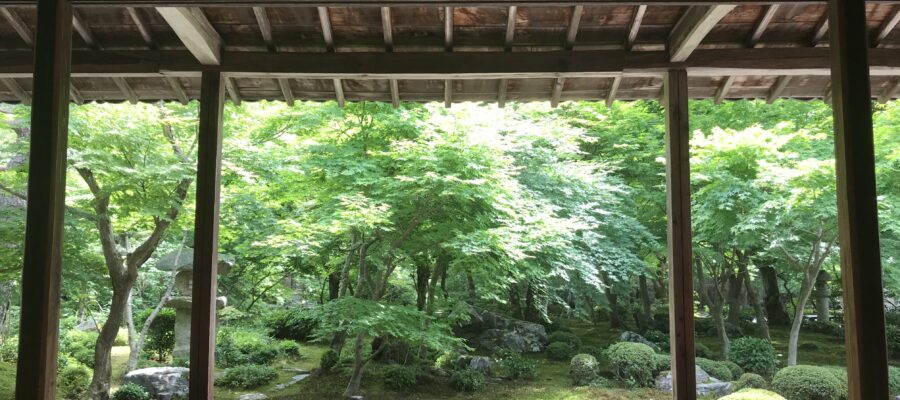圓光寺「十牛の庭」
京都の圓光寺にある、禅の悟りの到達度を表す十牛図がモチーフになった十牛之庭。この庭で一番に目を引いたのが、伏せた牛に見える大きな石です。牛に似た石を持ってきたのか、それとも十牛之庭という印象から、巨石が牛に似ているように見えてしまうのかわかりません。庭の名前も知らずに見た場合は、単なる石組にしか見えないのかもしれません。
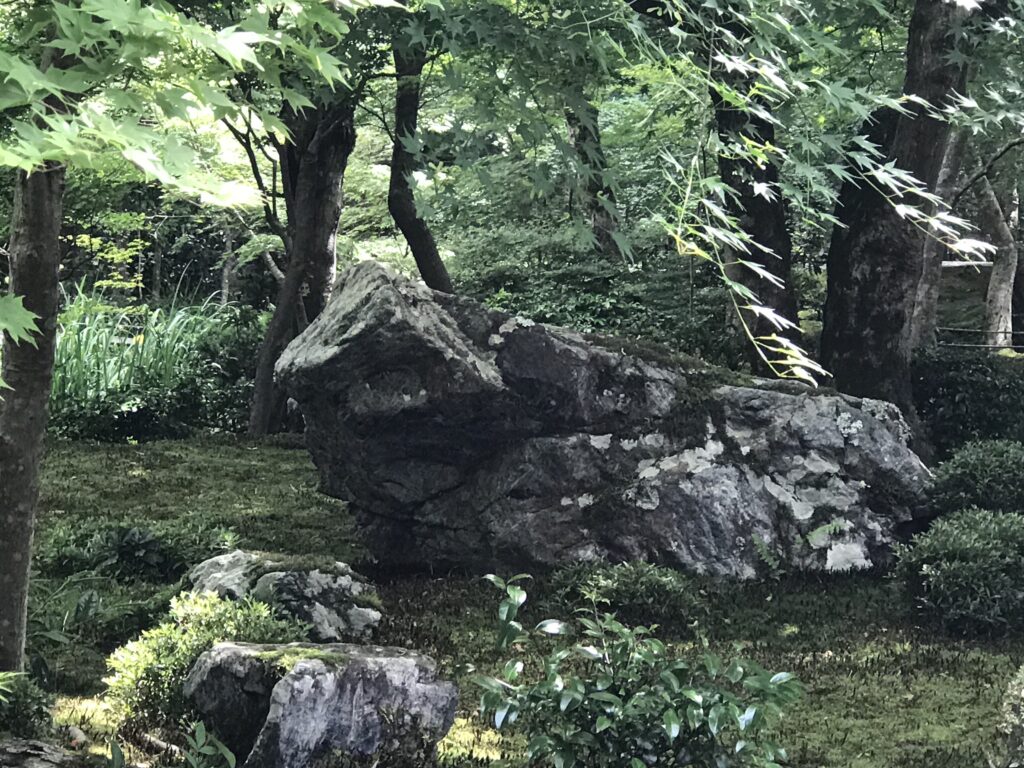
法輪寺「十牛の庭」
京都の法輪寺(通称:だるま寺)の本堂縁側の端には牛の置物があります。やはり禅寺では牛はモチーフなのでしょう。この庭も十牛の庭と呼ぶそうです。どこかに牛がいないか探してみましょう。ゆっくり庭園内を眺めてみると、やはり居ました。一見すると大きな石があるだけですが、苔むした石をじっくり眺めていると、牛が大きな体を伏せながら休んでいる姿に見えてくるから不思議です。周辺の緑に同化しながら、苔に彩られた石の牛が、昼ごはんに食べた草を反芻しているようでもあり、はたまた、暖かくなった日差しの中、昼寝を前に今にもあくびでもしそうな様子も伝わってきます。
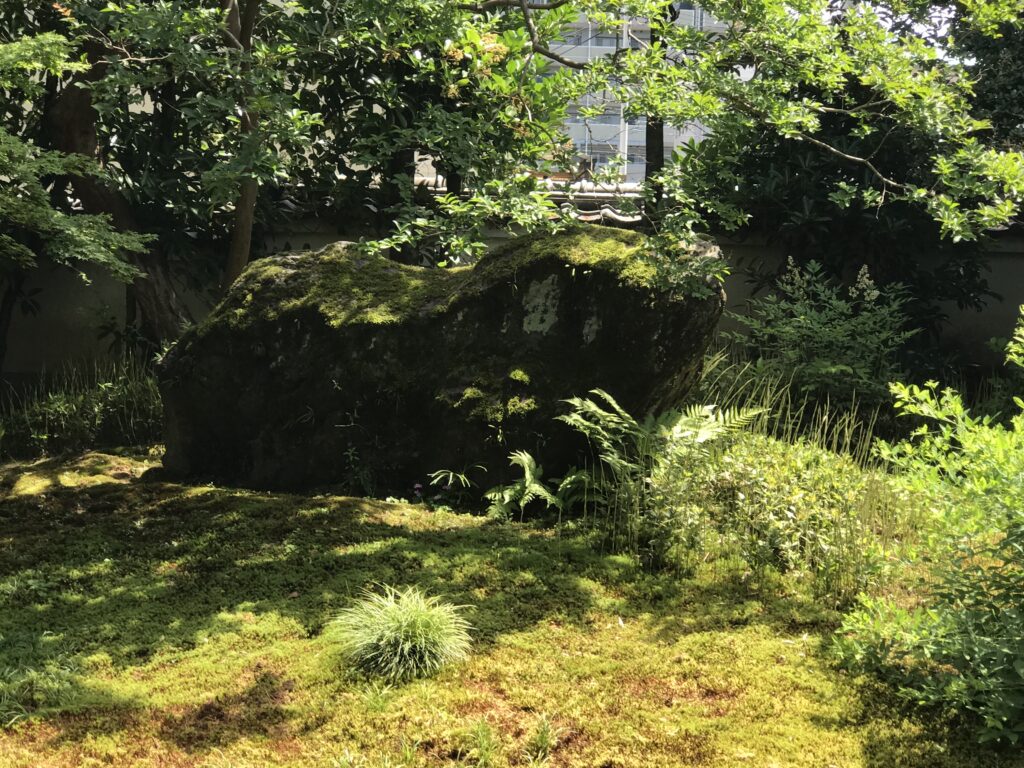
妙蓮寺「十六羅漢石庭」
もう一つ、京都の妙蓮寺にある十六羅漢石庭を紹介します。この庭の真ん中には臥牛石と呼ばれる石が据えられています。豊臣秀吉から贈られたもので、伏見城から移されました。大きく、横に広く寝そべったような姿に、牛が臥せていると当時の人々は感じたのでしょう。ただ、この石を見て、牛が寝そべっていると見立てる想像力は、今の日本人は失っているかもしれません。誰か、この石を見て臥せた牛をイメージで来た方はいらっしゃいますか?(完)
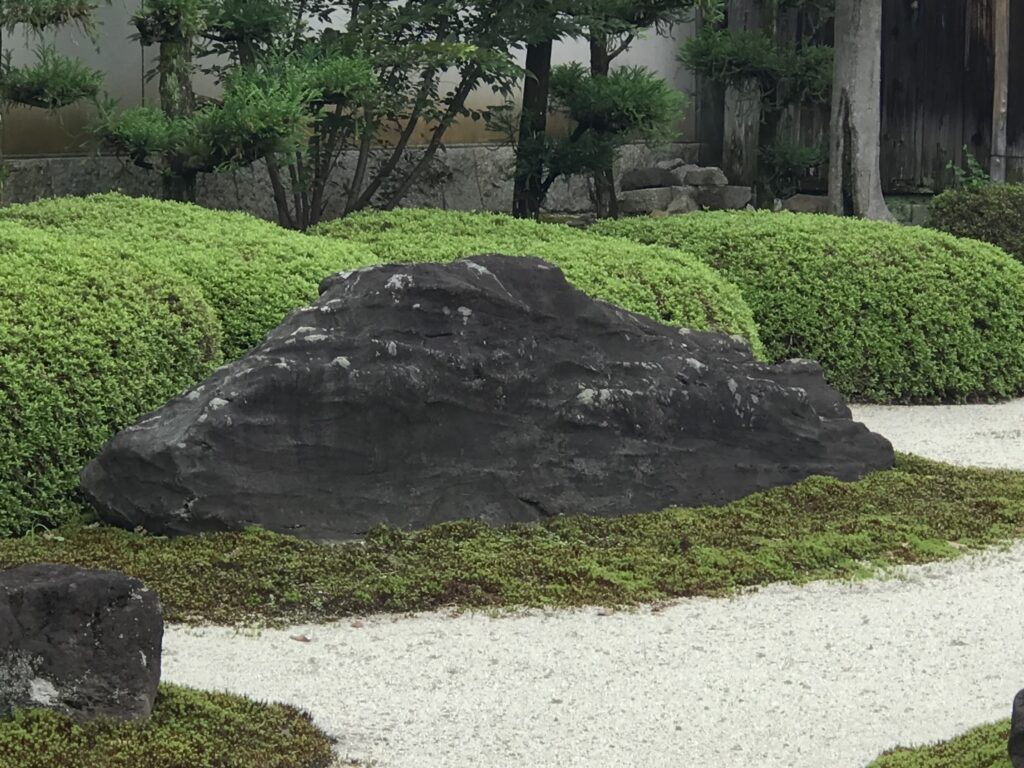
庭園の見方を紹介した書籍
宮元健次さんの「図説・日本庭園のみかた」には、時代別に庭園の見方を紹介しています。
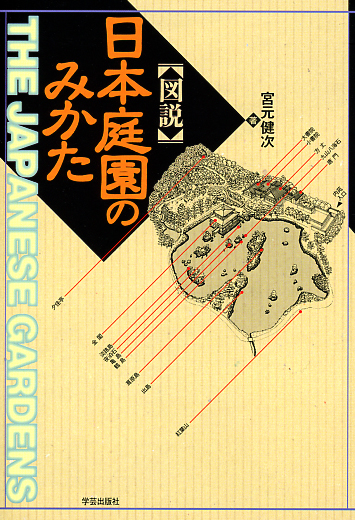
価格:2,090円
(2021/6/1 14:05時点)
感想(1件)
Cow masonry
Enkoji Temple “Jugyu no Niwa (Garden of Ten Oxen)”
The Ten Oxen Garden, located at Enkoji Temple in Kyoto, is inspired by the Ten Oxen Chart, which represents the level of enlightenment attained in Zen. The first thing that caught my attention in this garden was a large stone that looked like a prostrate cow. I don’t know if they brought in a stone that resembles a cow, or if the impression of the Ten Oxen Garden makes the huge stone look like a cow. If you look at it without knowing the name of the garden, it may just look like a mere set of stones.
Horinji Temple “Jugyu no Niwa (Garden of Ten Oxen)”
At the edge of the main hall of Kyoto’s Horinji Temple (also known as Daruma Temple), there is an ornament of a cow. I guess cows are a motif in Zen temples. It is said that this garden is also called the Garden of Ten Oxen. Let’s see if we can find a cow anywhere. I took my time to look around the garden and found them. At first glance, there was only a large stone, but as I looked carefully at the moss-covered stone, it looked like a cow resting with its large body down. Blending in with the surrounding greenery, the moss-colored stone cow seemed to be ruminating on the grass it had eaten for lunch, or perhaps it was about to yawn before taking a nap in the warm sunshine.
Myorenji Temple “The Sixteen Arhats Stone Garden”
I would like to introduce you to another garden, the Sixteen Arhats Stone Garden at Myorenji Temple in Kyoto. In the middle of this garden is a stone called “Gagyuseki. It was a gift from Toyotomi Hideyoshi and was moved from Fushimi Castle. And people of the time must have felt that the large, wide, lying shape of the stone was that of a cow lying down. However, today’s Japanese people may not have the imagination to imagine a cow lying down when they see this stone. Is there anyone who has seen this stone and imagined a reclining cow? (End)
Maçonnerie de vaches
Temple Enkoji ” Jugyu no Niwa (Jardin des dix bœufs) “
Le jardin des dix bœufs, situé au temple Enkoji à Kyoto, s’inspire du tableau des dix bœufs, qui représente le niveau d’illumination atteint dans le zen. La première chose qui a attiré mon attention dans ce jardin est une grande pierre qui ressemble à une vache prostrée. Je ne sais pas s’ils ont apporté une pierre qui ressemble à une vache, ou si l’impression du jardin des dix bœufs fait que l’énorme pierre ressemble à une vache. Si vous la regardez sans connaître le nom du jardin, elle peut ressembler à un simple ensemble de pierres.
Temple Horinji “Jugyu no Niwa (Jardin des dix boeufs)”
Au bord du hall principal du temple Horinji de Kyoto (également connu sous le nom de temple Daruma), il y a un ornement représentant une vache. Je suppose que les vaches sont un motif dans les temples zen. On dit que ce jardin est également appelé le jardin des dix bœufs. Voyons si nous pouvons trouver une vache quelque part. J’ai pris mon temps pour regarder autour du jardin et je les ai trouvées. À première vue, il n’y avait qu’une grande pierre, mais en regardant attentivement la pierre recouverte de mousse, elle ressemblait à une vache se reposant avec son grand corps vers le bas. Se fondant dans la verdure environnante, la vache en pierre couverte de mousse semblait ruminer l’herbe qu’elle avait mangée pour le déjeuner, ou peut-être était-elle sur le point de bâiller avant de faire une sieste sous le chaud soleil.
Temple Myorenji “Le jardin de pierre des seize arhats”.
J’aimerais vous présenter un autre jardin, le jardin de pierres des seize arhats du temple Myorenji à Kyoto. Au milieu de ce jardin se trouve une pierre appelée “Gagyuseki”. Il s’agit d’un cadeau de Toyotomi Hideyoshi qui a été déplacé du château de Fushimi. Les gens de l’époque ont dû penser que la forme large et allongée de la pierre était celle d’une vache couchée. Cependant, les Japonais d’aujourd’hui n’ont peut-être pas l’imagination nécessaire pour imaginer une vache couchée lorsqu’ils voient cette pierre. Y a-t-il quelqu’un qui a vu cette pierre et qui a imaginé une vache couchée ? (Fin)
